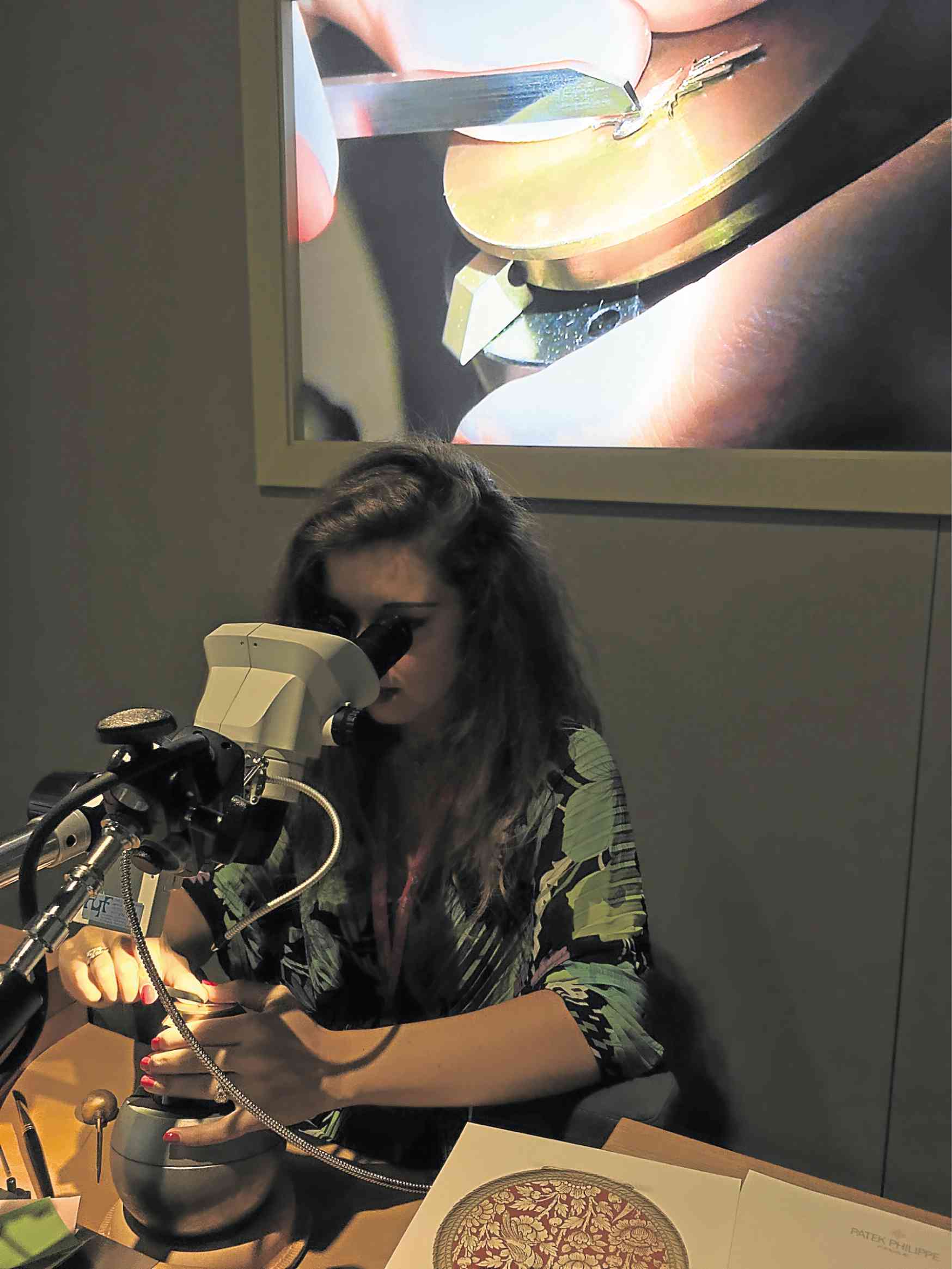
Choosing which timepieces to bring to Singapore for Patek Philippe’s Watch Art Grand Exhibition (ongoing until Oct. 13 at the Sands Theatre, Marina Bay Sands) was a two-year process for Dr. Peter Friess, curator of the Patek Philippe Museum in Geneva, Switzerland.
There are musts that were also shown in past exhibitions held in Dubai, Munich, London and New York—the first perpetual calendars, the Calibre 89, the first wristwatch made by Patek in the late 19th century—but there are also pieces chosen specially for the Asian customer, like the little pocket watch automatons, watches with tiny mechanical figures, like pocket-size tableaux.
In the 17th century, when the Jesuits traveled to China, they brought with them clocks—along with the clock makers “to keep them running all the time,” explained Friess at the Singapore opening—in order to get an audience with the emperor. The Chinese emperor liked automatons and clocks, he said.
“What the Swiss people did in the 19th century, they built little pocket watches. But instead of having dials showing the time, they put in the automatons. And the Chinese went crazy for these pieces,” said Friess. “And we thought these may be good things to bring here… So we brought a large number of these kinds of watches with nice enamel painting, with pearls, which kind of meets the taste here… We did not have many of them in New York. In Munich, we had more 16th-century clocks, because that was a hub for clocks in the 16th century. So we try to address what each place might want to see.”
Largest exhibit
The 1,800-sq m exhibition space is the largest the Swiss watchmaker has ever staged, with 10 rooms dedicated to current collections, commemorative limited-edition models, rare handcrafts, as well as the museum pieces.
The Geneva museum, founded in 2001, houses over 2,000 pieces of horological antiquities, a fraction of them brought in for the Singapore show. Apart from being showcases of history and the intricacies of mechanical watchmaking, many of these pieces also feature the dying artisanal decorative crafts of enameling, engraving and marquetry.
Patek Philippe brought in its artisans from Switzerland to demonstrate the making of these rare handcrafts, a nod to the region’s affection for artisanal crafts.
“We focused a lot on handcrafts because we see that there is a lot of craftsmanship and a skill set in the region, and we felt that these will resonate with the people,” said Friess.
For everybody
Friess said he hopes even nonwatch connoisseurs will find something to interest them in the show. “Everything we do here, our audio tours, are addressed to people who have seen a watch and maybe can read time. We start always at zero.”
Curiosities include the pendant watches of England’s Queen Victoria and those of a host of other royals from other countries; the first Patek Philippe lady’s wristwatch; and other historic models from the watchmaker’s own archive.
“I’m browsing at least two auction catalogs a day,” said Friess of his task to continually grow the museum’s collection. “We’re not buying huge numbers, but we buy very exceptional pieces.”
Friess, who has a famous anecdote about meeting Steve Jobs and tinkering with watches with the late Apple founder when the curator was working at a public museum in Germany, doesn’t see tech companies like Apple as an adversary of traditional mechanical watchmaking.
“This whole infrastructure they have developed, which is not just related to the watch, is related to computers, etc., and that’s an asset. They built these Apple watches with a top design and they popularize them on the wrists of young people, so they basically create the pathway for a mechanical watch in the future. It can only lead to that, so they’re doing us a big favor.”
Friess started working for Patek seven years ago, and he said that there are many advantages to being in the employ of a family-owned and -run enterprise.
“You get instant feedback. They tell you right away if you’re doing a good job or not. They’re very blunt about this, but in a very nice way. But they teach you to get better. They make fast decisions, which in any other company where you have shareholders you can never get. It makes things evolve quickly and helps you to save money.”
Horology is decidedly an esoteric subject, but the curator hopes each visitor of the exhibit leaves with a lesson. “Watchmaking is a red thread through European culture, from certain hundred years ago to today,” said Friess. “The way Europeans work, live, act, interact, invent, they’re all related to time and to watchmaking. You have the scientists with the brains, and the artisans and the craftsmen with their hands.
“And that’s a red thread that started in 1296 and it goes on to today. When it comes to Patek, I think that every mechanical watch you buy today, no matter which brand, it has a crown. And the crown, which you pull to adjust the hands, to wind the watch, is an invention of Adrien Philippe. That’s the big message: Whenever you see a crown, you have to think, ‘This is Patek,’ no matter which brand you buy.”
Free admission. Visit patek.com/watchart2019 to book tickets